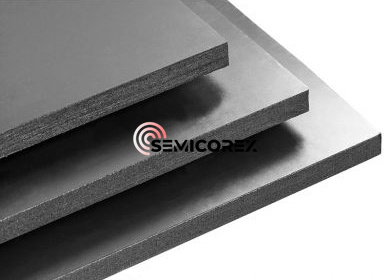
- English
- Español
- Português
- русский
- Français
- 日本語
- Deutsch
- tiếng Việt
- Italiano
- Nederlands
- ภาษาไทย
- Polski
- 한국어
- Svenska
- magyar
- Malay
- বাংলা ভাষার
- Dansk
- Suomi
- हिन्दी
- Pilipino
- Türkçe
- Gaeilge
- العربية
- Indonesia
- Norsk
- تمل
- český
- ελληνικά
- український
- Javanese
- فارسی
- தமிழ்
- తెలుగు
- नेपाली
- Burmese
- български
- ລາວ
- Latine
- Қазақша
- Euskal
- Azərbaycan
- Slovenský jazyk
- Македонски
- Lietuvos
- Eesti Keel
- Română
- Slovenski
- मराठी
- Srpski језик
Thermal field insulation material
2024-03-18
The process of monocrystalline silicon growth predominantly occurs within a thermal field, where the quality of the thermal environment significantly impacts crystal quality and growth efficiency. The design of the thermal field plays a pivotal role in shaping temperature gradients and gas flow dynamics within the furnace chamber. Furthermore, the materials used in constructing the thermal field directly influence its lifespan and performance.
Significance of Thermal Field Design
A well-designed thermal field ensures appropriate temperature distribution for semiconductor melt and crystal growth, thus facilitating the production of high-quality monocrystalline silicon. Conversely, inadequately designed thermal fields result in crystals failing to meet quality requirements or, in some cases, hinder the growth of complete monocrystals.
Selection of Thermal Field Materials
Thermal field materials refer to the structural and insulating components within the crystal growth furnace chamber. Among the commonly used insulation materials is carbon felt, composed of thin fibers that effectively block heat radiation, thereby providing insulation. Carbon felt is typically woven into thin sheet-like materials, which are then cut into desired shapes and curved to fit rational radii.
Another prevalent insulation material is cured felt, comprised of similar fibers but utilizing carbon-containing binders to consolidate dispersed fibers into a more robust, structured form. By employing chemical vapor deposition of carbon instead of binders, mechanical properties of the material can be further enhanced.
Optimizing Thermal Field Components
Typically, insulating cured felts are coated with a continuous layer of graphite or foil on their outer surfaces to reduce erosion, wear, and particulate contamination. Other types of carbon-based insulating materials, such as carbon foam, also exist. Generally, graphitized materials are preferred due to their significantly reduced surface area, leading to decreased outgassing and shorter time required to achieve proper vacuum levels in the furnace. Another alternative is C/C composite materials, known for their lightweight, high damage tolerance, and strength. Substituting graphite components with C/C composite in the thermal field significantly reduces the frequency of graphite component replacement, thereby improving monocrystal quality and production stability.





